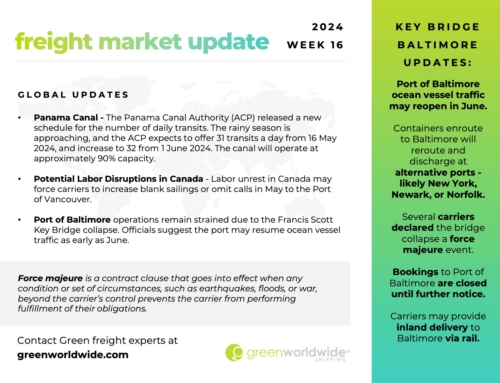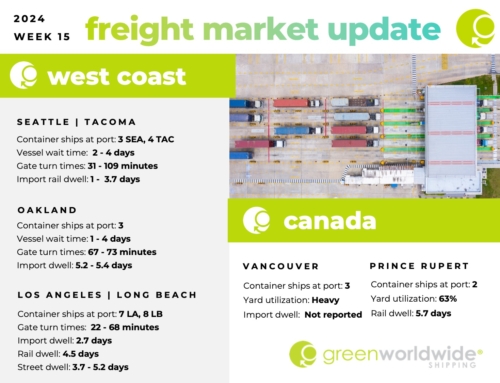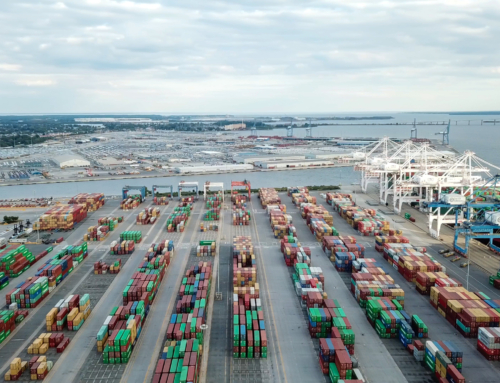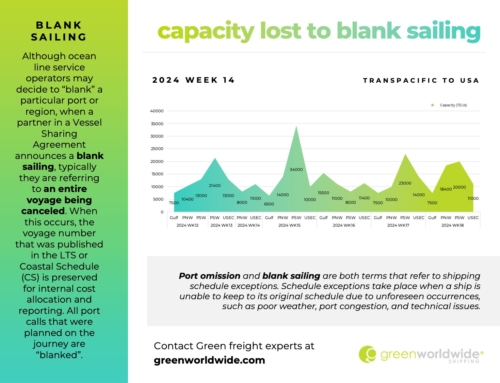Nationwide, importers are struggling to ensure their freight is picked up efficiently from U.S. ports as chassis inaccessibility continues to rise amid cost increases, limited availability and quality of equipment. The decade-long issue has been an increasing problem at ports and railroad terminals for years, resulting in complex arrangements that vary from region-to-region. Today more than ever, the challenge remains on how to efficiently supply chassis without delaying drivers.
Ever since ocean carriers removed themselves from the chassis business nine years ago to avoid being mired in new federal regulations dictating chassis roadability, the industry has struggled to find an effective replacement model. As steamship lines exited, intermodal equipment provers (IEPs) stepped in to coordinate the service with direct contracts or through local pools.
HERE’S HOW CURRENT MODELS WORK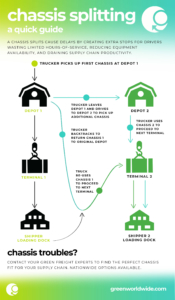
Trucker rents chassis from IEP (daily or short term contract);
Trucker picks up chassis from Depot 1 and proceeds to terminal;
Trucker picks up container from the terminal and delivers to first Shipper.
Then, there are two options:
- Re-use chassis if equipment matches; or
- Return original chassis back to Depot 1 and pick up correct chassis
- Note: if steamship line door move, carrier dictates chassis provider, that could be located at a further depot – known as carrier or merchant haulage
But as mega-ships begin to call on U.S. ports, supply chains must evaluate the impact this is having on local deliveries. With more freight to move in shorter bursts, and limited hours-of-service now enforced by electronic logs, truckers can easily lose capacity when forced to travel and wait for correct service equipment. Some ports have sought to step in and coordinate “gray” pools, also known as “pool of pools,” creating centralized area access to equipment. The Port of Los Angeles-Long Beach, which just received funding to reduce commercial congestions, currently uses “gray” pools to avoid bunching, the collection of chassis at certain terminals. Pure “gray” pools are another method being tested, but differs in that a single entity manages the pool of IEPs; however, this model has not been met with open arms.
Chassis splitting occurs when a trucker has to go to one place to pick up the chassis and another to get the freight, or is moving two separate containers that require separate IEP chassis. Adding hours of wait-time, chassis split delays are also aggravated by lack of roadable equipment and effective positioning. Rail terminals, expecially in major hubs like Chicago, are also facing limited chassis supply as repair technicians are drawn to more competitive wage industries.
It’s no secret that trucking providers have turned to owning their own chassis fleets or entering long-term contracts in an effort to eliminate chassis split waste. While ownership allows for full control for peak season deliveries and the ability to customize the equipment to handle multiple or complex loads, the cost of upkeep and maintenance in addition to space needed for storage and operation is steep.
As demand for ocean freight space remains high, even under a looming January 1st25% tariff deadline, shippers can expect strong trucking prices and capacity to match incoming cargoes and should work effectively to create trucking strategies with their providers to mitigate costly delays and become preferred clients.
Stay up-to-date on freight news by following Green Worldwide Shipping on Facebook, Twitter, and LinkedIn or, subscribe to Green’s Freight Talk blog to received updates directly to your email.


